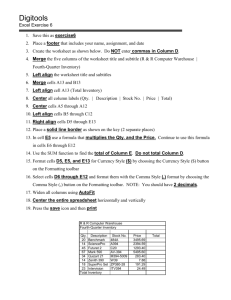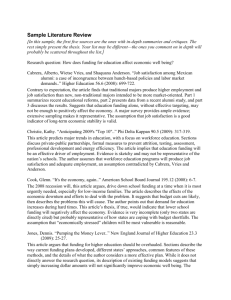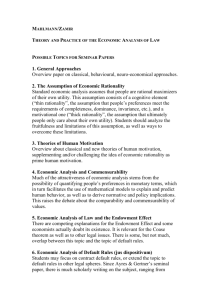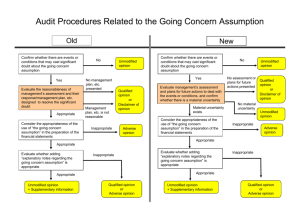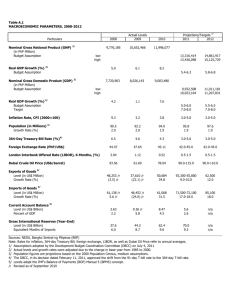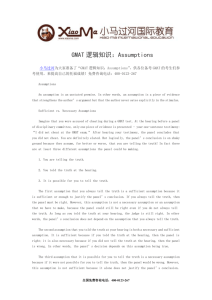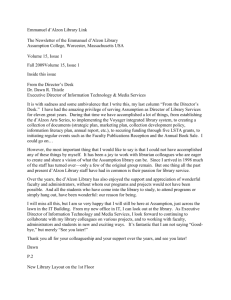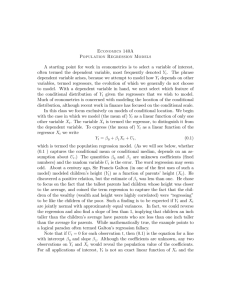How Do Diversity Assumptions Influence Team Member
advertisement
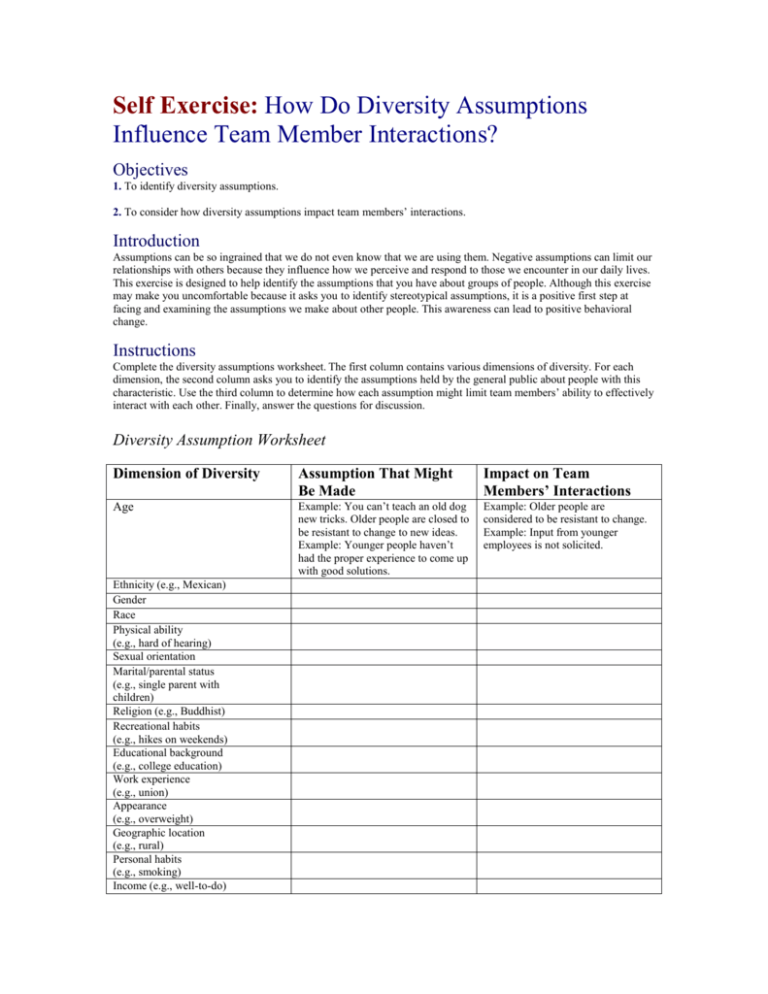
Self Exercise: How Do Diversity Assumptions Influence Team Member Interactions? Objectives 1. To identify diversity assumptions. 2. To consider how diversity assumptions impact team members’ interactions. Introduction Assumptions can be so ingrained that we do not even know that we are using them. Negative assumptions can limit our relationships with others because they influence how we perceive and respond to those we encounter in our daily lives. This exercise is designed to help identify the assumptions that you have about groups of people. Although this exercise may make you uncomfortable because it asks you to identify stereotypical assumptions, it is a positive first step at facing and examining the assumptions we make about other people. This awareness can lead to positive behavioral change. Instructions Complete the diversity assumptions worksheet. The first column contains various dimensions of diversity. For each dimension, the second column asks you to identify the assumptions held by the general public about people with this characteristic. Use the third column to determine how each assumption might limit team members’ ability to effectively interact with each other. Finally, answer the questions for discussion. Diversity Assumption Worksheet Dimension of Diversity Assumption That Might Be Made Impact on Team Members’ Interactions Age Example: You can’t teach an old dog new tricks. Older people are closed to be resistant to change to new ideas. Example: Younger people haven’t had the proper experience to come up with good solutions. Example: Older people are considered to be resistant to change. Example: Input from younger employees is not solicited. Ethnicity (e.g., Mexican) Gender Race Physical ability (e.g., hard of hearing) Sexual orientation Marital/parental status (e.g., single parent with children) Religion (e.g., Buddhist) Recreational habits (e.g., hikes on weekends) Educational background (e.g., college education) Work experience (e.g., union) Appearance (e.g., overweight) Geographic location (e.g., rural) Personal habits (e.g., smoking) Income (e.g., well-to-do) Questions for Discussion 1. Where do our assumptions about others come from? 2. Is it possible to eliminate negative assumptions about others? How might this be done? 3. What most surprised you about your answers to the diversity assumption worksheet?


